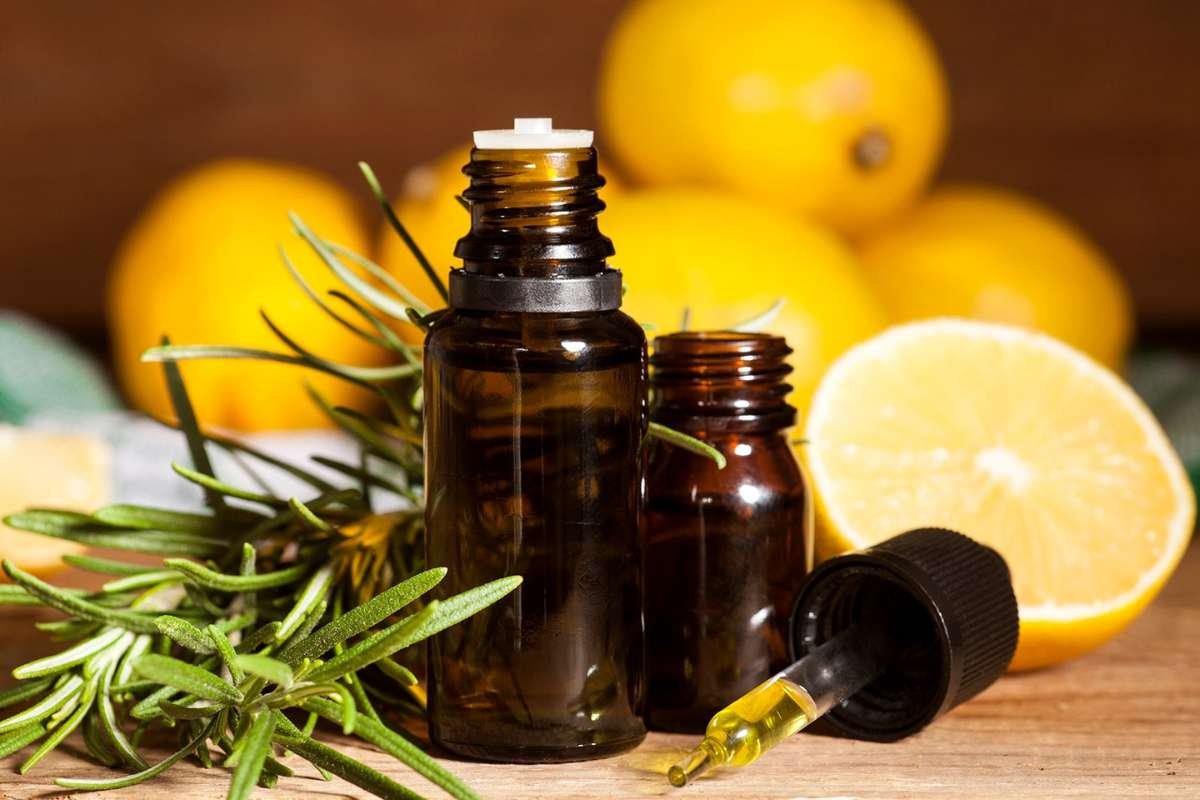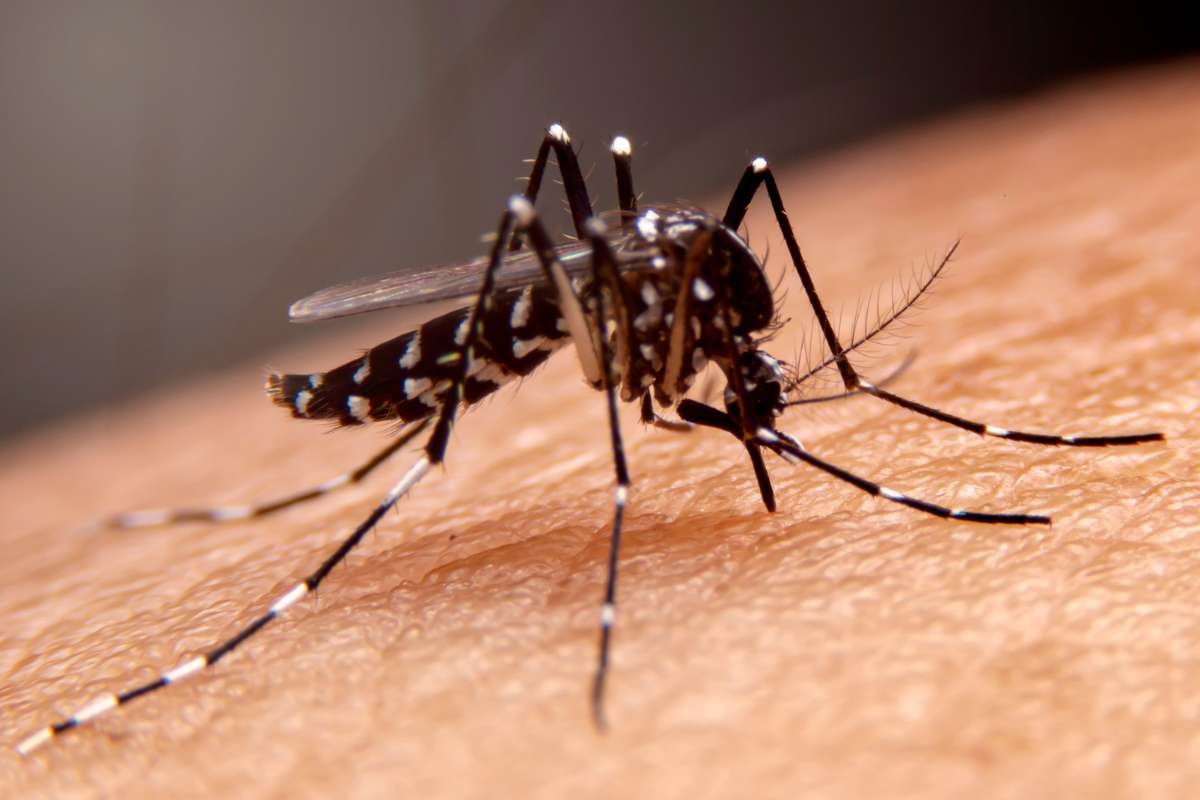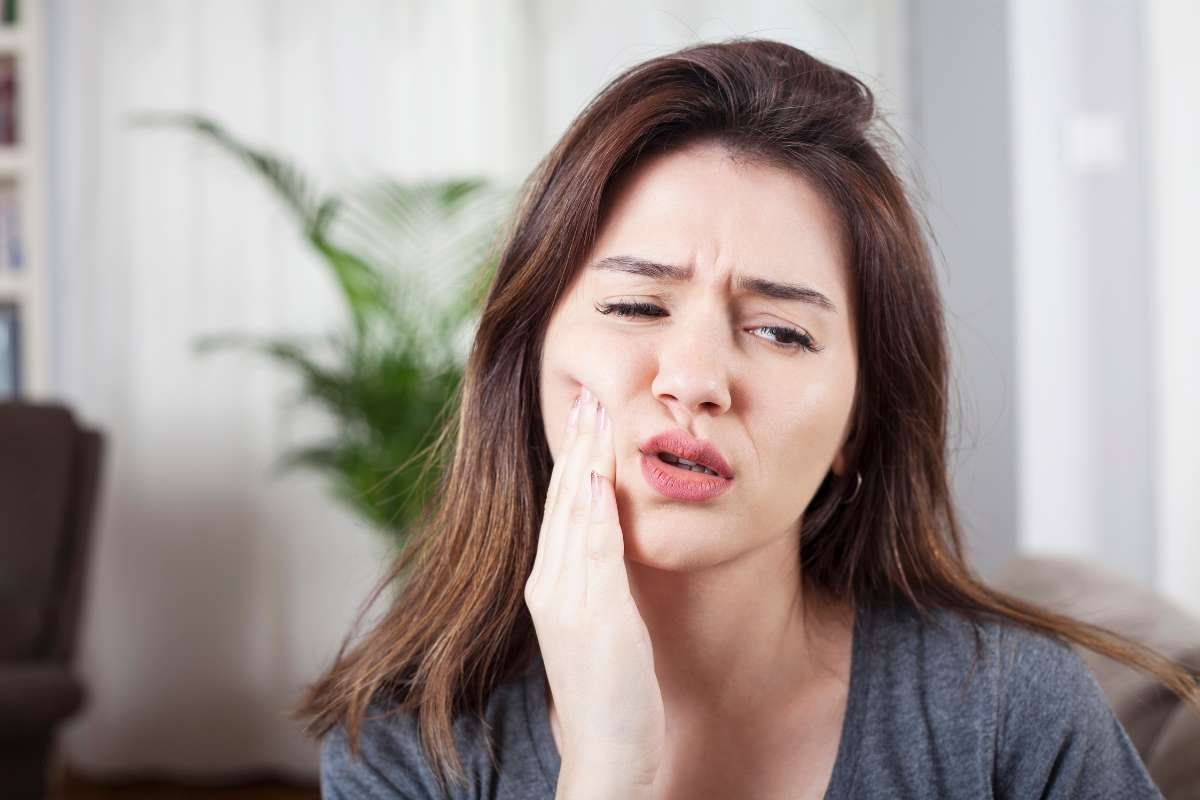Nothing ruins a peaceful outdoor evening faster than a swarm of biting insects. From mosquitoes and ants to midges and bedbugs, these tiny attackers can leave behind red, itchy, and swollen reminders of their visit. While over-the-counter creams and ointments can help, more people today are turning to essential oils for bug bites, a natural, plant-powered alternative that’s both effective and gentle on the skin.
According to data from Healthline and PubMed, essential oils have gained traction for their anti-inflammatory, antimicrobial, and pain-relieving benefits. In fact, global market reports indicate that over 30% of natural remedy users now incorporate essential oils into their skincare or first-aid kits. But do these aromatic oils really work for insect bites, or is it just another wellness trend? Let’s explore how science and nature come together to provide quick, natural relief from those annoying bites.
Why Essential Oils Work for Bug Bites?
Ever notice how a single mosquito bite can drive you crazy with itching? That’s because insect bites trigger an immune response. Your body releases histamines to combat the insect’s saliva, leading to inflammation, redness, and irritation. If left untreated, some bites can even become infected due to excessive scratching.
This is where essential oils for bug bites offer a natural yet effective solution. These oils are concentrated plant extracts obtained through distillation, long celebrated in skincare and wellness for their healing compounds. As Healthline explains, essential oils like lavender, tea tree, and chamomile are packed with natural agents that help calm the skin, fight bacteria, and reduce swelling.
For instance, tea tree oil contains terpinen-4-ol, a compound known for its antimicrobial and anti-itch properties, while lavender oil soothes inflammation and speeds up healing. Together, these oils help minimize discomfort and support faster skin recovery.
Though essential oils aren’t a guaranteed cure, they offer a holistic, chemical-free approach to treating bug bites. When properly diluted and applied, they can complement traditional remedies, bringing quick relief and restoring comfort after those inevitable outdoor adventures.
Best Essential Oils for Bug Bite Relief
When nature leaves its mark in the form of itchy, swollen bug bites, sometimes the best remedy also comes from nature itself. Over centuries, people have turned to essential oils for bug bites to calm inflammation, prevent infection, and promote skin healing long before modern creams existed. Today, scientific research continues to support what traditional wisdom always knew: these aromatic plant extracts hold powerful bioactive compounds that relieve discomfort and restore balance to irritated skin.
Below is a detailed look at the most effective essential oils for bug bite relief, including how they work, the right way to apply them, and safety tips to keep in mind.
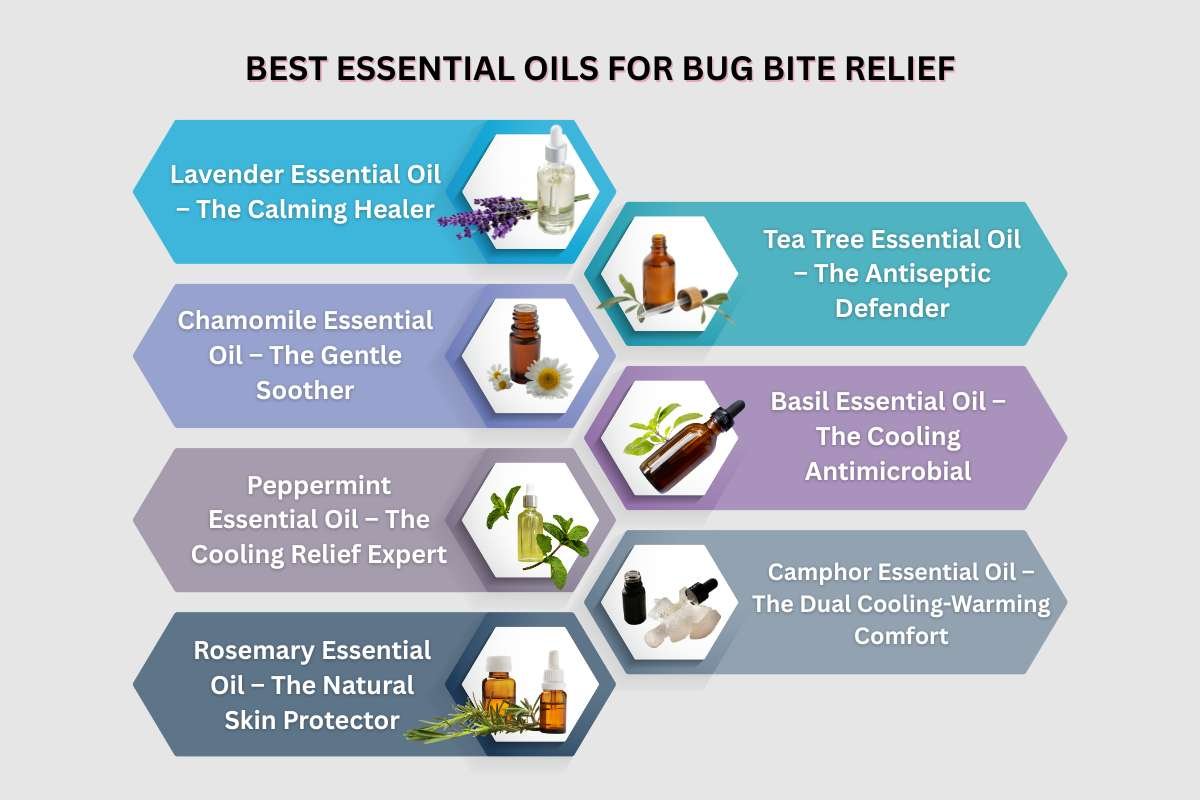
1. Lavender Essential Oil – The Calming Healer
Lavender essential oil is often called the “first aid kit in a bottle” and for good reason. Its gentle floral aroma masks a potent blend of linalool and linalyl acetate, compounds that Healthline highlights for their anti-inflammatory and skin-soothing effects. Lavender helps minimize redness, swelling, and itching, while promoting skin cell regeneration.
| How to apply | Dilute 2–3 drops of lavender oil in a teaspoon of carrier oil (like jojoba or sweet almond) and dab directly on the affected area. |
| Safety tip | While lavender is one of the safest essential oils for bug bites, always do a patch test first to rule out sensitivity. |
2. Tea Tree Essential Oil – The Antiseptic Defender
Few natural remedies rival tea tree oil for its broad-spectrum antimicrobial power. Rich in terpinen-4-ol and alpha-terpineol, it helps prevent bacterial infection caused by scratching while reducing inflammation and itch. Studies suggest tea tree oil can reduce swelling by up to 40% in mild dermatitis cases, making it a trusted go-to for irritated skin.
| How to apply | Mix 1–2 drops of tea tree oil with a teaspoon of coconut oil and apply using a clean cotton swab. For multiple bites, blend it into aloe vera gel for cooling relief. |
| Safety tip | Never apply tea tree oil undiluted—it’s potent and can irritate the skin if overused. |
3. Chamomile Essential Oil – The Gentle Soother
Chamomile’s anti-histamine properties make it ideal for calming allergic skin reactions. Both Roman and German chamomile oils contain azulene and bisabolol, compounds that naturally reduce redness and itchiness. If your bites are extra sensitive or inflamed, this oil can bring noticeable comfort.
| How to apply | Blend 2 drops of chamomile oil into 1 tablespoon of carrier oil. Massage lightly onto the bite. |
| Safety tip | Avoid if you have known allergies to ragweed or daisies, as reactions can cross over. |
4. Basil Essential Oil – The Cooling Antimicrobial
Known for its sharp, herbal scent, basil essential oil contains eugenol, a compound with pain-relieving and antibacterial effects. It cools hot, irritated skin while helping reduce infection risk from scratching.
| How to apply | Mix 2 drops of basil oil with 1 teaspoon of olive oil and gently apply with a cotton pad. |
| Safety tip | This oil is strong; always dilute and avoid direct use on very sensitive skin. |
5. Peppermint Essential Oil – The Cooling Relief Expert
When the itch feels unbearable, peppermint oil offers near-instant comfort. Thanks to its high menthol content, it creates a refreshing cooling effect that numbs the area temporarily. This oil is particularly effective for mosquito bites and mild stings.
| How to apply | Combine 1 drop of peppermint oil with 2 teaspoons of carrier oil and rub gently on the bite. You can also add it to a cold compress for extra relief. |
| Safety tip | Avoid using peppermint oil on small children or near the eyes, as it can cause irritation. |
6. Camphor Essential Oil – The Dual Cooling-Warming Comfort
Camphor oil delivers a unique sensory contrast. It cools initially, then provides gentle warmth, distracting the brain from pain and itching. Its mild antiseptic nature also helps prevent infection in inflamed bites.
| How to apply | Mix 1 drop of camphor oil with a tablespoon of carrier oil and apply with a cotton swab to the bite area. |
| Safety tip | Camphor is potent; avoid using it during pregnancy or on children under 6. |
7. Rosemary Essential Oil – The Natural Skin Protector
With its clean, woody aroma, rosemary essential oil doesn’t just soothe; it strengthens. Packed with antioxidants and anti-inflammatory compounds, it supports faster healing while helping prevent bacterial infection around bug bites.
| How to apply | Blend 2 drops of rosemary oil with a teaspoon of carrier oil and massage onto the skin twice daily. |
| Safety tip | Avoid use if you have epilepsy, high blood pressure, or are pregnant. |
Each of these essential oils for bug bites offers a unique way to soothe the skin naturally, whether it’s lavender’s calming touch, tea tree’s germ-fighting power, or peppermint’s cooling sensation. The secret lies in consistency and correct dilution: a few drops, properly applied, can transform your post-bite discomfort into a refreshing, skin-healing experience.
In the next section, we’ll explore how to match the right essential oil to the type of bug bite because a mosquito bite doesn’t always need the same treatment as a bee sting.
Essential Oils by Bug Bite Type
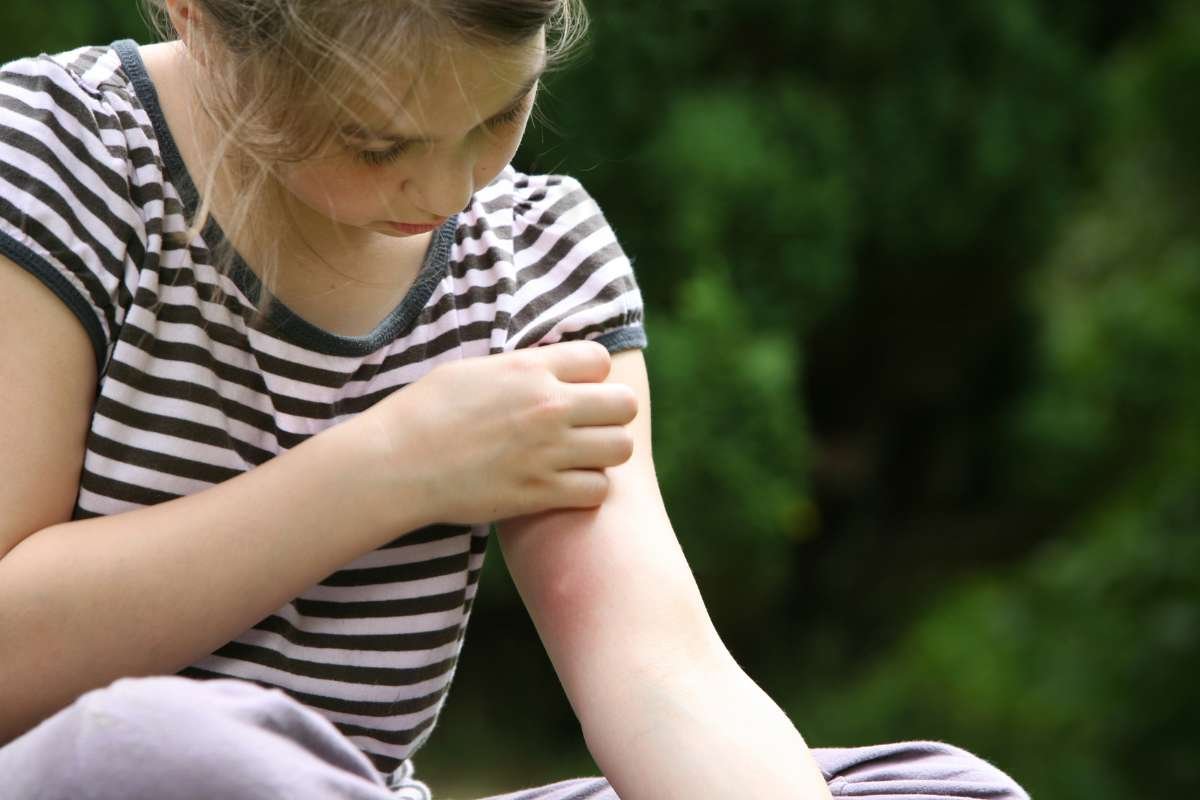
Not all bug bites are the same, and neither are their reactions. A mosquito bite may leave behind a small red bump and intense itching, while a bee sting can cause sharp pain, swelling, and localized heat. The key to effective relief lies in selecting the right essential oils, tailored to the type of insect and the symptoms it triggers.
1. Mosquito Bites
These bites are often itchy, red, and mildly swollen. Essential oils for bug bites, like lavender, tea tree, and peppermint, are ideal for mosquito bites. Lavender’s calming compounds reduce redness and inflammation, tea tree helps prevent infection if you scratch, and peppermint provides a cooling, soothing sensation that eases itching. Simply dilute a few drops of your chosen oil in a carrier oil and apply gently to the affected area.
2. Ant Bites
Fire ants and other biting ants can cause burning sensations or small blisters. Oils such as chamomile, eucalyptus, and basil help calm irritation and reduce discomfort. Chamomile soothes histamine-triggered itching, eucalyptus has anti-inflammatory and antimicrobial properties, and basil’s eugenol content helps relieve pain while preventing infection. Apply a diluted blend directly to the bite a few times daily.
3. Bee or Wasp Stings
These stings can be particularly painful, often causing swelling and heat around the affected area. For relief, lavender, chamomile, and frankincense oils are highly effective. Lavender reduces inflammation and redness, chamomile calms the skin, and frankincense promotes healing while supporting the skin’s recovery. Always clean the area first, then apply a diluted oil blend to soothe discomfort.
4. Flea Bites
Flea bites often appear in clusters and can cause severe itching. Essential oils for bug bites, such as tea tree, lemongrass, and peppermint, help relieve irritation while providing antimicrobial protection. Mixing these oils with aloe vera gel creates a cooling, soothing application that can reduce redness and prevent secondary infection.
5. Spider Bites
While most common spider bites are mild, they can still cause swelling, redness, and irritation. Oils such as tea tree, eucalyptus, and basil are useful for spider bites. They help calm inflammation, disinfect the skin, and minimize discomfort. Apply a small amount of diluted oil directly to the bite, and avoid scratching to prevent infection.
6. Tick Bites
Ticks can leave localized redness and irritation after removal. Essential oils like lavender and rose geranium provide gentle relief. Lavender soothes inflammation, while rose geranium supports healing and restores skin balance. Applying the right essential oils for bug bites after proper tick removal can reduce swelling and speed up skin recovery.
Each of these oils works in its own way, targeting the specific reactions caused by different insect bites. By choosing the correct essential oils and applying them properly, you can reduce itching, swelling, and the risk of infection, all while supporting the skin’s natural healing process.
Safety Guidelines for Using Essential Oils
While essential oils for bug bites can provide soothing relief, it’s important to remember that they are highly concentrated plant extracts. Using them incorrectly can lead to skin irritation, allergic reactions, or other unwanted side effects. Following safety guidelines ensures that you can enjoy the benefits of these oils safely and effectively.
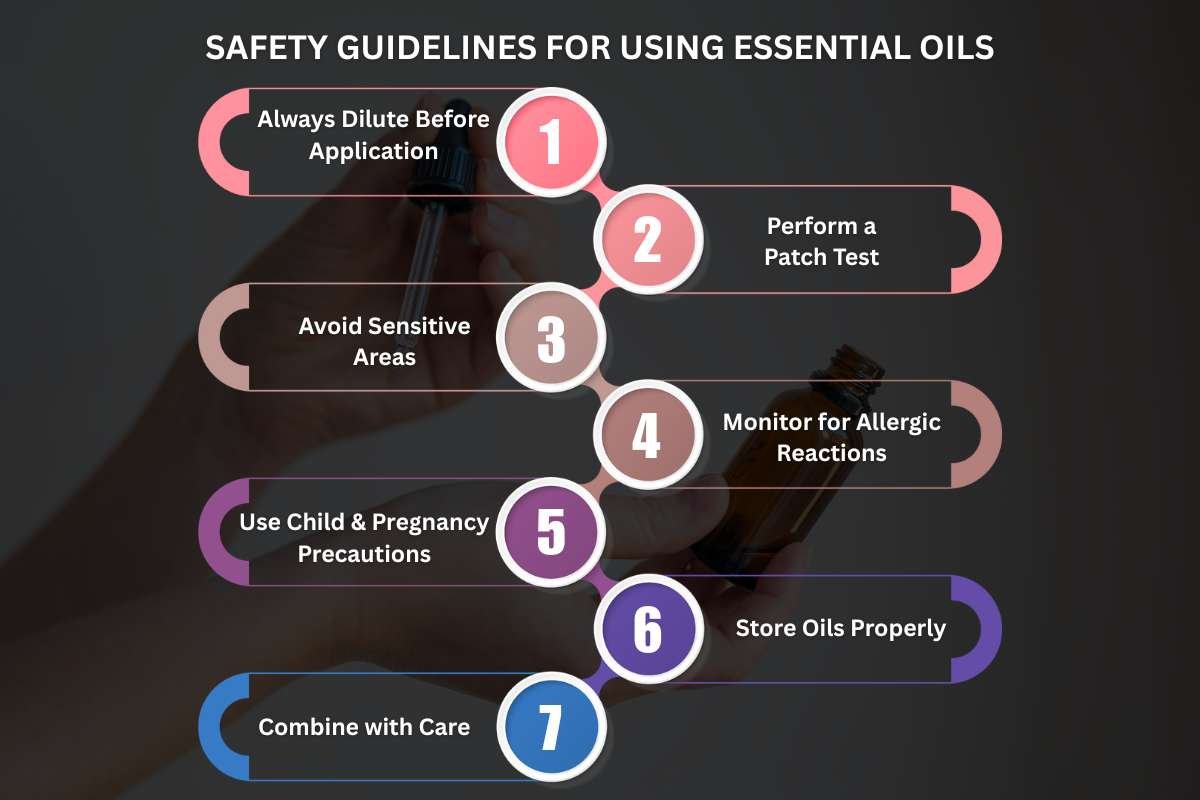
1. Always Dilute Before Application
Essential oils are potent. Applying them directly to the skin without dilution can cause redness, burning, or irritation. A safe guideline is a 3% dilution, about 6 drops of essential oil per 10 ml of carrier oil, such as coconut, jojoba, or almond oil. For children or sensitive skin, a 1% dilution is recommended.
2. Perform a Patch Test
Before applying any essential oil, do a patch test on a small area of skin. Wait 24 hours to ensure there’s no adverse reaction. This step is especially important for essential oils for bug bites, as skin affected by bites may be more sensitive than usual.
3. Avoid Sensitive Areas
Keep essential oils away from the eyes, mouth, and other mucous membranes. Oils like peppermint or camphor can cause a strong burning or stinging sensation if accidentally applied to these areas.
4. Monitor for Allergic Reactions
If you notice severe redness, swelling, itching, or blistering after using an essential oil, discontinue use immediately and wash the area with mild soap and water. In rare cases of severe allergic reactions, such as difficulty breathing or widespread hives, seek medical attention immediately.
5. Use Child and Pregnancy Precautions
Some essential oils are not safe for young children, pregnant women, or breastfeeding mothers. Oils like rosemary, camphor, and peppermint should be used sparingly or avoided in these cases. Always consult a healthcare professional if unsure.
6. Store Oils Properly
Essential oils should be stored in dark glass bottles away from direct sunlight and heat. This preserves their potency and prevents oxidation, which can reduce effectiveness.
7. Combine with Care
When creating blends of essential oils for bug bites, stick to recommended ratios and avoid mixing too many strong oils at once. Overuse can irritate the skin instead of soothing it.
Following these safety guidelines allows you to reap the maximum benefits of essential oils without risk. By respecting their potency, you ensure a gentle, natural, and effective way to relieve itching, reduce swelling, and promote faster healing.
Application Methods and DIY Recipes
Effectively using essential oils for bug bites isn’t just about selecting the right oil; it’s also about applying them correctly and creating blends that maximize relief while soothing the skin naturally. When applied thoughtfully, essential oils can calm itching, reduce redness, and accelerate healing, turning a painful bite into a minor inconvenience.
1. Direct Diluted Application
The simplest way to use essential oils is by diluting them with a carrier oil and applying directly to the bite. Carrier oils like coconut, jojoba, or sweet almond oil reduce the potency of essential oils while nourishing your skin.
DIY Recipe:
- 2 drops Lavender Oil
- 1 drop Tea Tree Oil
- 1 teaspoon Coconut Oil
Mix well and gently dab onto each bite using a cotton swab. Repeat 2–3 times a day until redness and itching subside.
2. Aloe Vera Gel Infusion
Aloe vera naturally cools and hydrates irritated skin. Combining it with essential oils creates a soothing gel that reduces inflammation and protects against infection.
DIY Recipe:
- 2 tablespoons Aloe Vera Gel
- 1 drop Peppermint Oil
- 1 drop Chamomile Oil
Apply a thin layer to affected bites for an instant cooling effect. This method works exceptionally well for clustered bites, like flea or mosquito bites, providing gentle relief from essential oils for bug bites. The gel can be stored in a small airtight container for repeated use throughout the day.
3. Cooling Compress with Essential Oils
For bites that feel hot, swollen, or particularly itchy, a cool compress infused with essential oils provides immediate relief.
DIY Recipe:
- 1 cup cold water or ice water
- 1 drop Lavender Oil
- 1 drop Tea Tree Oil
Soak a clean cloth in the mixture, wring it out, and place it on the bite for 5–10 minutes. This reduces swelling, numbs the area, and enhances the oils’ anti-inflammatory effects.
4. Roll-On Application for On-the-Go Relief
For outdoor adventures or travel, a roll-on bottle offers a convenient, mess-free solution. It allows instant application of essential oils whenever itching begins, ensuring you never have to suffer a bite in silence.
DIY Recipe:
- 10 ml Carrier Oil
- 2 drops Lavender Oil
- 1 drop Peppermint Oil
- 1 drop Tea Tree Oil
Fill a clean roll-on bottle and apply directly to bites as needed. This method is ideal for children or adults who want a discreet way to calm irritation during outdoor activities.
Tips for Maximum Effectiveness
- Apply essential oils for bug bites at the first sign of itching or redness to prevent prolonged inflammation.
- Reapply every few hours for persistent bites.
- Avoid using more than 3 essential oils in one blend to minimize the risk of skin irritation.
- Store DIY blends in dark, airtight containers to preserve potency and effectiveness.
By following these methods and recipes, you can harness the full potential of essential oils for bug bites, reducing discomfort, calming inflammation, and promoting faster skin recovery, all while avoiding harsh chemical alternatives.
Preventing Bug Bites with Essential Oils
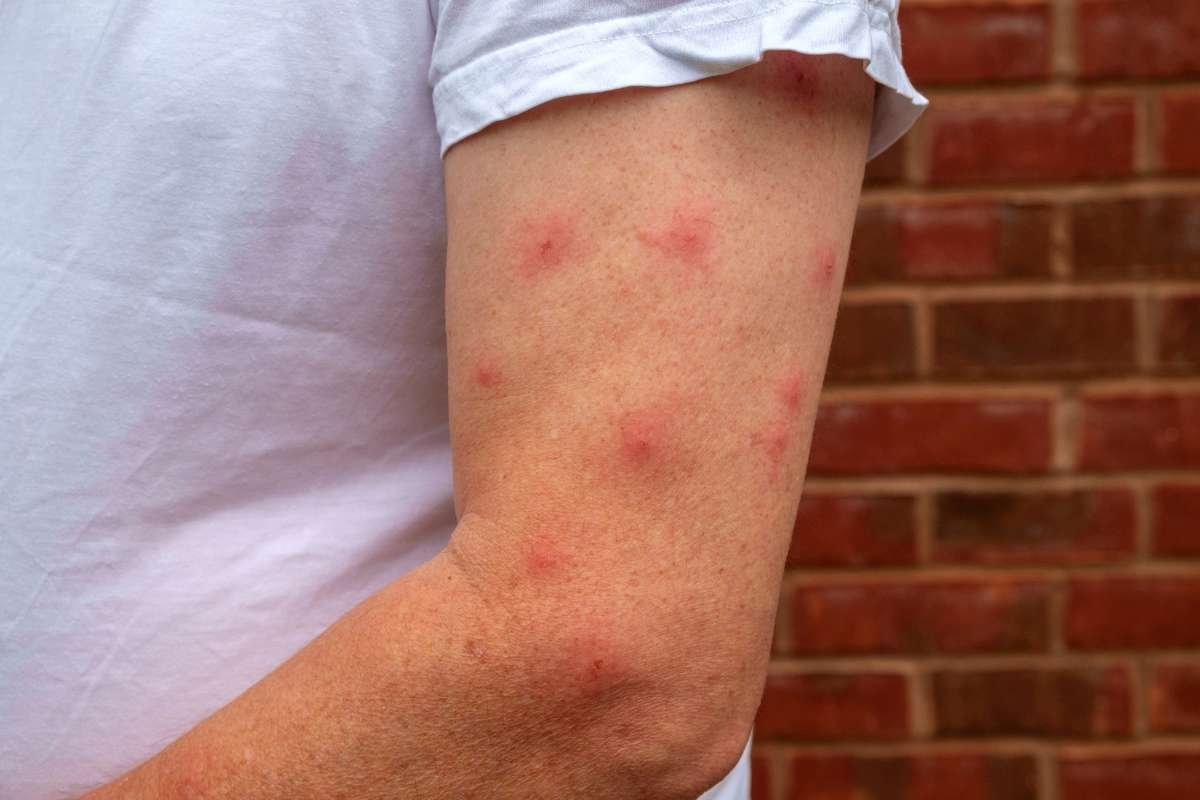
While soothing a bite after it happens is essential, prevention is always the best strategy. Luckily, essential oils for bug bites aren’t just effective for relief they can also act as a natural deterrent against insects, keeping your skin safe and comfortable during outdoor activities. By integrating these oils into your daily routine or outdoor preparations, you can proactively reduce the chances of being bitten.
1. Create a Natural Bug-Repellent Spray
One of the simplest ways to prevent bites is by making a DIY essential oil spray. Oils such as citronella, lavender, eucalyptus, peppermint, and tea tree naturally repel mosquitoes, ants, and other biting insects. This spray offers a chemical-free, skin-friendly alternative to commercial repellents.
DIY Recipe:
- 1 cup water or witch hazel
- 10 drops Citronella Oil
- 5 drops Lavender Oil
- 5 drops Tea Tree Oil
Combine the ingredients in a spray bottle and lightly mist exposed skin or clothing before outdoor activities. Not only does this keep insects away, but it also provides a refreshing aroma. Using essential oils for bug bites this way ensures a gentle, effective barrier against unwanted pests.
2. Infuse Essential Oils into Clothing
Another innovative approach to prevention is infusing fabrics with essential oils. A few drops of lavender, eucalyptus, or citronella applied to socks, sleeves, or scarves can create a protective layer that repels insects. This method is especially useful when hiking, camping, or gardening, as it adds an extra line of defense without relying on harsh chemicals.
Tip: Reapply oils to clothing after washing or prolonged exposure outdoors to maintain effectiveness. By doing so, you can take advantage of essential oils for bug bites in a proactive, wearable way.
3. Blend Oils with Carrier Oils for Skin Protection
Applying essential oils directly to the skin with a carrier oil not only soothes existing bites but can also help prevent future ones. Carrier oils like coconut or almond act as a protective layer, while the essential oils’ natural scent and compounds deter insects.
DIY Recipe:
- 2 tablespoons Coconut Oil
- 2 drops Peppermint Oil
- 2 drops Lavender Oil
Massage a thin layer onto exposed areas such as arms, legs, and neck before outdoor exposure. This blend provides a dual benefit: it keeps insects at bay and nourishes the skin simultaneously. Incorporating essential oils for bug bites in this way ensures you stay protected while supporting overall skin health.
By embracing these preventive strategies, you can enjoy the outdoors with confidence. Essential oils not only help prevent itching and discomfort but also offer a natural, chemical-free alternative to traditional repellents, making them an indispensable part of any bug-fighting routine.
Also Read: 15 Natural Remedies for Bug Bites That Work When Nothing Else Does
Conclusion
Essential Oils for Bug Bites offer more than just temporary relief; they provide a natural, holistic way to care for irritated skin. From calming the relentless itch of mosquito bites to reducing the swelling of bee or ant stings, these oils harness anti-inflammatory, antimicrobial, and soothing properties that support faster skin recovery. Beyond treatment, certain oils can also act as natural repellents, helping prevent bites before they happen and making outdoor activities more comfortable and enjoyable.
By using these oils safely, diluting them properly, performing patch tests, and following simple application methods, you can create a gentle, chemical-free routine that protects your skin while promoting healing. Incorporating Oils for Bug Bites into your daily wellness practices not only addresses immediate discomfort but also supports overall skin health, giving you peace of mind and natural protection against insects. With thoughtful use, these oils can transform the way you manage and prevent bug bites, letting you enjoy the outdoors without the constant worry of irritation or infection.
FAQs about Essential Oils
1. Are essential oils safe for all bug bites?
Most essential oils for bug bites are safe for mild insect bites, such as mosquito or ant bites, when properly diluted. However, sensitive skin, young children, or severe allergic reactions may require extra caution. Always perform a patch test before full application.
2. How do essential oils relieve itching and swelling?
Essential oils like lavender, tea tree, and chamomile contain anti-inflammatory, antimicrobial, and soothing compounds. They help reduce redness, swelling, and itchiness while supporting the skin’s natural healing process. Using them consistently can make bite symptoms more manageable.
3. Can essential oils prevent bug bites?
Yes! Certain oils, including citronella, peppermint, and eucalyptus, act as natural insect repellents. Incorporating essential oils for bug bites into sprays, clothing, or carrier oil blends can reduce the chances of being bitten during outdoor activities.
4. How should essential oils be applied to bug bites?
Always dilute essential oils in a carrier oil, gel, or lotion before applying to the skin. Light dabbing, gentle massage, or use in a cooling compress ensures safe and effective relief. Roll-on bottles and aloe gel blends are convenient, portable options for on-the-go care.
5. When should I seek medical attention?
If a bite becomes excessively swollen, shows signs of infection, or causes severe allergic reactions (such as difficulty breathing), essential oils for bug bites are not enough. Seek medical attention immediately to prevent complications.

